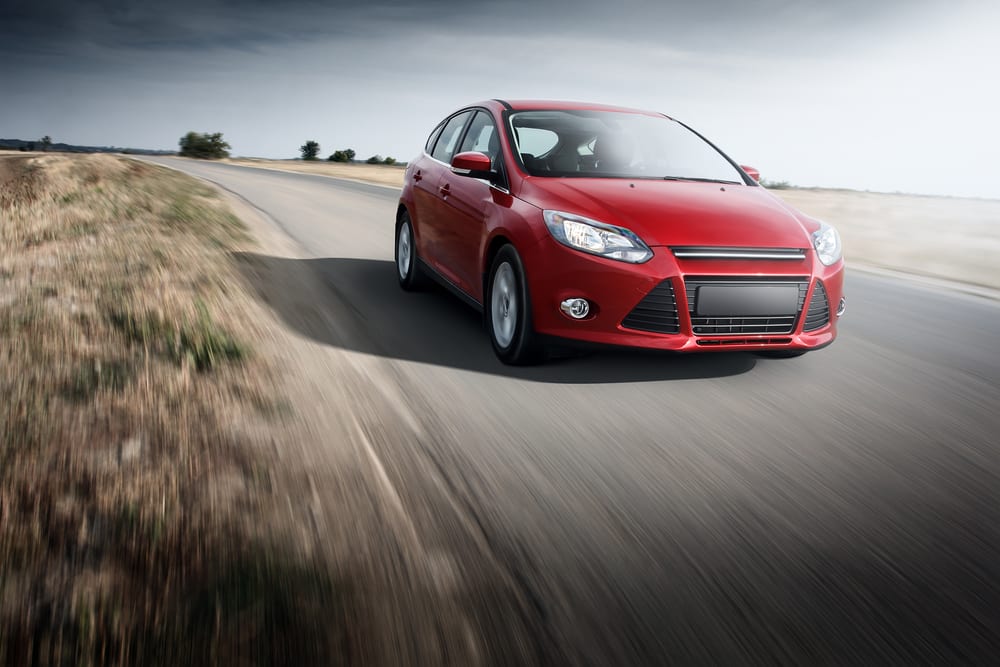

If a vehicle is of the front-wheel drive variety, then all of the power made by the engine gets to the ground via the two front wheels. This arrangement is extremely popular in modern vehicles for a number of reasons, including:
Smaller drivetrain: Instead of the engine, transmission, and differential running from the front to the back of a vehicle, a front-wheel drive vehicle has the entire drivetrain in the front.
Less weight: Because of the compact drivetrain, front-wheel drive vehicles weigh less than the equivalent rear-wheel or all-wheel drive vehicle.
More traction than rear-wheel drive: With most of the vehicle’s weight near or above the drive wheels, front-wheel drive vehicles tend to have more traction than rear-wheel drive vehicles. This is especially helpful when the road is slippery or wet.
Less power needed: Because of the light weight and superior traction, each horsepower goes further in front-wheel drive vehicles. This means smaller engines can be used, saving further weight.
Most fuel efficient type of drivetrain: Due to the light weight and more efficient use of power, front-wheel drive vehicles get more miles out of every gallon compared to the equivalent all-wheel drive or rear-wheel drive vehicle.
Least expensive type of drivetrain: Between the fact that front-wheel drive drivetrains cost less to manufacture and the fact that they are generally found in small, inexpensive vehicles, front-wheel drive cars have gained the reputation of being the most cost-effective cars on the road.
The vast majority of front-wheel drive vehicles have transversely mounted engines. Transversely mounted engines have the cylinders in line right-to-left rather than the front-to-back arrangement found in longitudinally mounted engines. Several front-wheel drive vehicles through the years have had longitudinally mounted engines, like the Toyota Tercel, but that arrangement is not nearly as space-saving as the alternative.
The saved space under the car where the transmission and driveshaft tunnel would go and where the rear differential would go makes more space available for the interior of the vehicle. The body can also sit lower, making the vehicle feel more planted to the ground with a lower center of gravity.
How does front-wheel drive work?
There is generally not a lot of space under the hood of a front-wheel drive vehicle. Instead of a neat little motor mounted onto a frame like under the hood of a model car, there is a big block of components carefully fit together in a small space. This is because the engine sits right over the transaxle under the hood.
The transaxle acts as the transmission and front differential. A typical setup involves a transversely mounted engine mounted off-center under the hood. On the side of the engine compartment with more space due to the off-center mounting, the transmission is mounted to the engine. The transmission then sends power directly into the front differential gears. The front differential in this type of setup is usually off-center as well. Through a series of universal joints that allow the wheels to turn and go up and down via the vehicle’s suspension while still receiving power from the engine.
Are there drawbacks?
While front-wheel drive is amazingly practical and user-friendly, there are certainly some drawbacks:
Understeer: Understeer occurs when the wheels get too much power while turning and lose traction. Losing traction affects the vehicle’s ability to turn, so the vehicle pushes more towards the outside of the turn than where it is being steered.
Torque-Steer: Torque-Steer is caused by power going unevenly to the front wheels and making the vehicle turn while accelerating. This can be unpredictable and dangerous. The issue is caused by uneven distances between the front differential and the two front wheels.
Uphill performance in slippery conditions: The extra weight over the front wheels helps when the road has very little grip. However, when the road is slippery and climbs up at a steep incline, rear-wheel drive gains an advantage over front-wheel drive as the vehicle’s weight shifts back at an incline, providing traction. Still, all-wheel drive is usually best in this scenario.
Limited power: Due to the presence of torque-steer when too much power goes to the front wheels, there is a limit to how much power a front-wheel drive vehicle can handle without becoming temperamental in the corners. After 250 or so horsepower, a vehicle can’t really put all of it’s power down unless traveling in a straight line.
Best uses for front-wheel drive?
Front-wheel drive is ideal for most vehicle applications on the road. It preserves fuel economy, uses power efficiently, and keeps vehicles small and light. It is not ideal for very fast or very large vehicles, but for everyday drivers it's the simplest and most cost-effective. It can be better in rain and snow than rear-wheel drive, but in areas with serious snowfall or lots of dirt roads all-wheel drive will remain king. Regardless, most vehicles on sale today are front-wheel drive for their numerous benefits.



